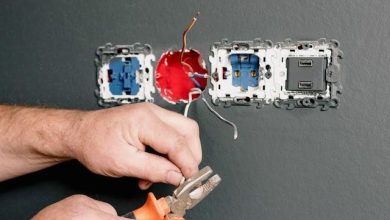
Behind every plastic part, you see today is a result of a successful tooling project. This is because creating plastic parts begins with the desired mold, which can be done by tooling.
But what exactly is tooling in injection molding?
Put simply, the goal of tooling and tooling design is to create a mold that is used for the manufacturing of desired plastic parts. Since every injection molding project is different, engineers and designers must account for several factors in tooling to get things done right.
That said, here are five key tooling tips to make your desired plastic part:
Table of Contents
Know Your Plastic
The tool and molding process are mostly determined by the type of polymer or plastic you intend to use. Having a general notion of what material you’ll use for your product will considerably assist your injection molding partner in identifying the best tooling design.
Flow rates will vary depending on the polymer. Some polymers are less free-flowing and shrink more slowly, whereas others are the reverse. If you have tooling developed for one polymer and then move to another, you’ll need to rebuild the tool to make it more suitable for the new material.
Since you have to consider and narrow down your choices, it’s best to consult your injection molding partner on your project.
Choose Your Machines Wisely
If you’re planning to run your tooling in-house and outsource the manufacturing of your plastic part, you’ll have to know which machines you will be using the tool on. Knowing what machines you’ll use is a good practice to follow to ensure the tool is compatible with all the machines in your manufacturing process.
Because if not, certain special features such as core-pulling or two-shot molding will be harder to rework. Again, always seek consultation from your injection molding personnel because they can provide valuable insight into what machines apply to your tooling requirements.
Be Specific in Your Design
Detail is key. Make a thorough list of all the features you desire in your completed goods or parts. This is the most effective technique to ensure that your tooling is tailored to your design.
Describe the purpose of each item in great detail, as well as how the pieces will fit together. These specifics will also aid quality assurance for your toolmaker and injection molding partner, guaranteeing that these tools will produce a product that manufactures the component the way you want it.
If you overlook specifics, you might wind up paying a lot of money to accommodate last-minute, tiny changes because your equipment didn’t mold the component properly.
Strong Mold Design
Precision items can only be made by adhering to stringent specifications in both the cavities and the mold components’ design. To allow for adequate melt flow and pressure, you must have properly located gates. The final section’s look can be improved by placing the gates at a hidden spot on the part.
Also, the gate’s size is an essential factor to consider. The gate must be big enough to allow for appropriate material packing without increasing cycle time. If the gate is too narrow, the packing may not be enough to fill the cavity (a short shot), or the item may have additional flaws.
Vents must be included in the mold’s design. Vents allow displaced air from the molten resin to exit the tool. The size and location of the vents, such as gating, are critical in making a high-quality item. Overly big vents might enable the plastic to escape, resulting in flashing.
Smaller vents may not be able to expel all of the trapped air and gas. These gas bubbles might result in an incorrect fill (a short shot) or even worse. The gas might ignite, leaving burn scars on the component.
Always Run Samples
Running samples improves quality. That said, the manufacturing industry always ensures tooling quality by running samples, and so should you. By doing this, you can determine if any adjustments need to be made to the mold design, parameters, or material selection. Also, running samples and prototypes can discover problem areas with your design. Therefore you can resolve the issues quickly and avoid costly reworking of tooling and design.
Key Takeaway
A great injection molding process starts at the very beginning of the project and involves key decisions that need to be made before the plastic is even cut. This is what tooling projects are for and it is the heart of every molding project.
That said, tooling is a very important part of injection molding. If you want the highest quality parts, you need to have the right tooling. Using low-quality tooling will produce poor parts and will look cheap. So if you want your product to be taken seriously, you need to choose the proper tooling and consult your injection molding partner.




